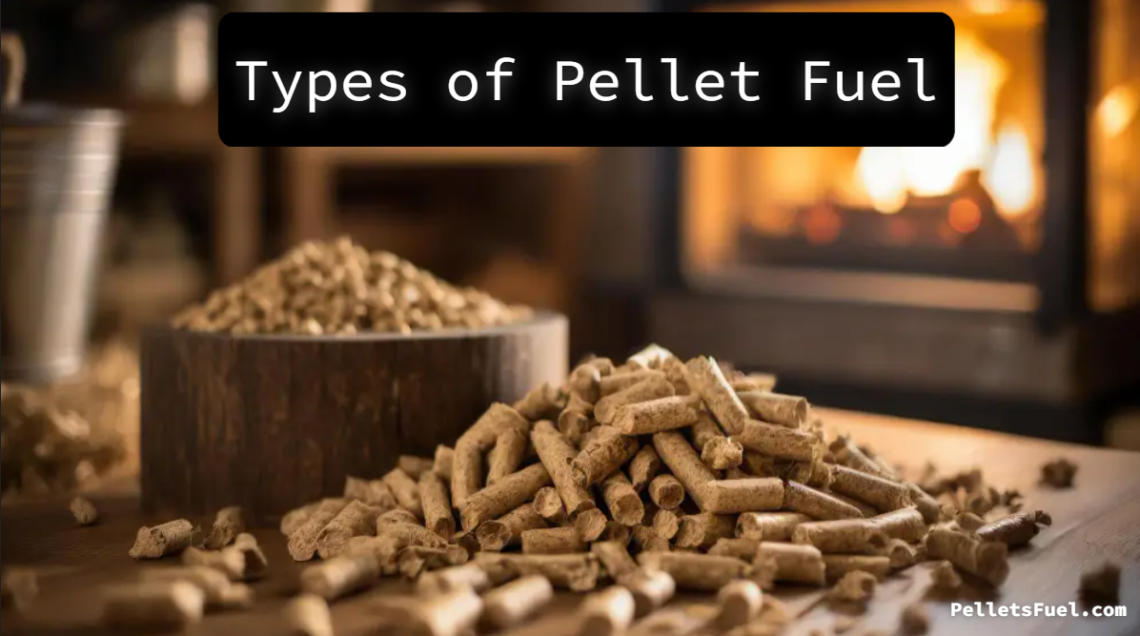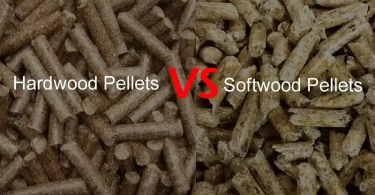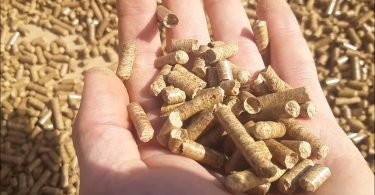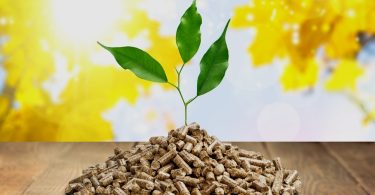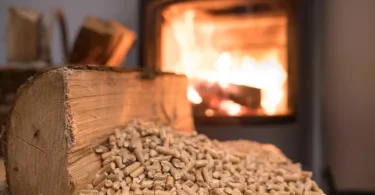- What is Pellet Fuel?
- Where do Materials for Fuel Pellets Come From?
- Types of Fuel Pellets Based on Source
- * Pellets from Industrial Waste
- * Pellets from Energy Crops
- * Pellets from Food Waste
- * Pellets from Agricultural Waste
- * Pellets from Wood Processing Waste
- Types of Fuel Pellets Based on Use
- * Pellets for Residential Heating and Cooking
- * Pellets for Industrial Application
- * Pellets for Electricity Production
- Premium Grade Fuel Pellets
- Standard Grade Fuel Pellets
- Final Considerations
With the growing need to move to renewable energy sources, the need and the market for wood fuel pellets is expected to keep rising in the upcoming decades. When it comes to this source of energy, wood fuel is an excellent source of energy for heating both homes and the industrial sector. However, since not all wood fuel pellets are made the same, let’s consider some of the most common types that you can find.
What is Pellet Fuel?
Pellet fuel is any type of woody fibrous biomass material that is turned into small pellets with a diameter between 5-10 millimeters. These small cylinders are burned in special stoves or boilers and can provide a lot of heat, especially considering their compact size. They are usually no longer than 2 to 4 cm and come pre-packed in plastic bags that hold between 15-18 kilograms of pellets.
They’re very easy to handle and very easy to use. In fact, with a proper stove all you need to do is empty 1 to 2 bags of pellets into the storage compartment every single day. As very little ash is produced during the combustion process, in most models, you will only need to empty the ashtray 1 to 2 times a week. This and basic cleaning will result in a device that will last a long time, burn efficiently, and save your time and money while doing so.
Where do Materials for Fuel Pellets Come From?
As we have said before, not all pellets are made the same. Although the basic shape and size is always the same, it is the feedstock material that makes the biggest difference. Based on this we have several types of pellets. The materials for pellets can come from nearby forests, agricultural fields or even different Industries.
An important thing to know is that pellets were first developed in the United States during the oil crisis. Back then, the public was in search of a reliable, energy packed fuel source that could substitute for oil and be sold at lower prices. So far, this has helped divert millions of tons from our landfills and has saved a lot of methane from being released. Whatever the source that the pellets come from, unless we are talking about improperly managed forests, this is a green and the renewable energy source that can help households and economies switch to renewable energy. Let’s consider them in more detail.
Read Also : How Are Fuel Pellets Made?
Types of Fuel Pellets Based on Source
It is clear that there is a lot of biomass that is being deposited into our landfills every single year. And although the biological or organic waste from our households can be repurposed and are commonly used to make fuels, we still have large quantities of paper, sawdust, wooden furniture, and woody residue that needs to be used. The extrusion process, used in making fuel pellets, is a process where we should divert all of this waste from landfills and back into our homes in a more useful form.
* Pellets from Industrial Waste
Many developed countries feature strong industries of paper making and wood processing. Besides this, different recycling operations also produce a considerable amount of wood waste. Instead of diverting all of this waste into the landfills, where it would slowly biodegrade and release a lot of methane, we can divert them to fuel pellet processing plants. Here, materials from different industries are processed in such a way that we can obtain a highly combustible, highly efficient, cheap and reliable energy source in the form of pellets.
* Pellets from Energy Crops
Energy crops, commonly used to obtain biofuels, can also be used in the pellet production process. Some unusual examples on this list include pineapple leaves, giant cane, wildcane, golden bamboo, king grass, sugarcane and more. After the materials are dried, the process is just like any other form of biomass in the process of making pellets. The only thing that could be different is the total energy content per kilogram or per ton.
* Pellets from Food Waste
Food waste is present around the globe. A lot of it gets discarded into the landfills we have available. When it comes to utilizing this food waste, any fibrous materials are good, for as long as they do not contain a lot of oils. Oils could lube up the die in the extruder and make the entire process of pellet extrusion less efficient.
* Pellets from Agricultural Waste
On top of this a form of pellet that is a bit lower in quality can reproduce from agricultural waste. This waste includes any kind of straw and hay as well as residue from the coffee industry, sugar processing industry and animal feed industry can be used. Once these materials are dried, they are processed just like any other type of woody materials to obtain pellets.
| Biomass Source | Caloric Value |
| Weed | 4.50 kWh/kg |
| Straw – Hay | 4.90 kWh/kg |
| Maize stalk | 4.93 kWh/kg |
| Corncob | 4.93 kWh/kg |
| Straw – Wheat | 5.15 kWh/kg |
| Peanut shell | 5.95 kWh/kg |
| Cedar | 5.33 kWh/kg |
| Pine | 5.29 kWh/kg |
* Pellets from Wood Processing Waste
As a society, we do use a lot of wood. It may not seem so, but a lot of wood is used every year to make furniture, new homes, transportation boxes, pallets and more. At the end of its life cycle only would have to be used somehow. Instead of sending it to the landfills, it can be given a second life in the form of pellets. In the case of untreated wood that is used during the pelletization process, the ashes can be used as a fertilizer on farming operations. If this is treated wood, the ashes cannot be used but have to be disposed of as regular waste.
Types of Fuel Pellets Based on Use
Of course, dividing the pellets based on the materials that they are made from is not the only categorization that we can make. Pellets have different uses and can be used in different industries in both residential and industrial sectors. Let’s consider these in more detail.
Read Full Article Here: Uses of Fuel Pellets (Why Switch to Wood Fuel Pellets?)
* Pellets for Residential Heating and Cooking
The most common idea you get when wood pellets are mentioned is residential heating and cooking pellets. These pellets are usually of premium quality, and come at a premium price. They are usually made of clean biomass or woody materials and as such can provide a lot of heat in a relatively low volume to store. Cooking pellets have to be made from virgin wood or any form of untreated wood that does not release any resins or smells during the combustion process.
* Pellets for Industrial Application
Pellets for industrial application are more varied. They can be made out of sawdust, woody materials, biomass, coffee grounds, and other forms of fibrous materials, such as paper. Considering the size of industrial boilers and power plants, any impurities are less likely to cause malfunction to the equipment, which cannot be said of pellets in residential use.
* Pellets for Electricity Production
When it comes to electricity production, the same types of pellets that are used in industrial boilers can be used here as well. In the case of old coal-powered power plants that are being switched to new fuels, pellets can significantly prolong their lifespan, and bring a higher return on investment. In the case of larger operations, the pellets are usually ground back to the dust before being fed into the furnaces.
Premium Grade Fuel Pellets
Premium grade fuel pellets are the pellets that you should be after when purchasing a heating fuel for your home. They offer the highest quality product, often at premium prices. These pellets usually feature very low moisture content, closer to 5% and very little dust in the packaging. They are usually of a more uniform size and they’re very hard to the touch and difficult to break by hand.
Standard Grade Fuel Pellets
These pellets may contain moisture contents closer to 10% and may contain some dust in the packaging itself. This dust may build up in the feeding system within the stove but it usually does not compromise the operation of the entire stove to a higher extent. With any kind of pellet that you want to use, you will need to clean out the stove periodically including the combustion chamber, that exhaust, and the feeding mechanism.
Nevertheless, standard pellet fuels are still a good product to use and they pack a lot of energy. And while some believe that standard grade fuel pellets are more economical to use, others say that premium brands offer the highest ratio between quality and price. All in all, this depends on your personal preferences.
Final Considerations
When talking about new fuels for heating homes and producing energy, it is necessary to stress the need to switch to renewable energy sources. Wood fuel pellets and biomass fuel pellets match these prerequisites to a large extent. They are made out of waste, save space in landfills and methane from being released and they give a new life to materials that would otherwise be discarded.

